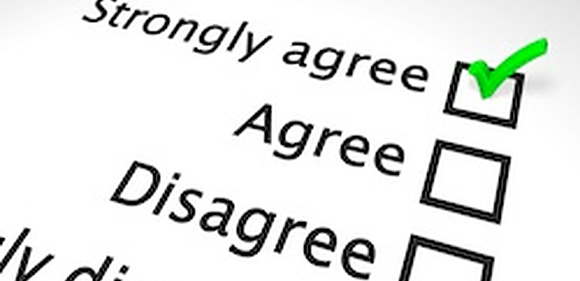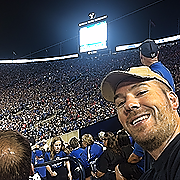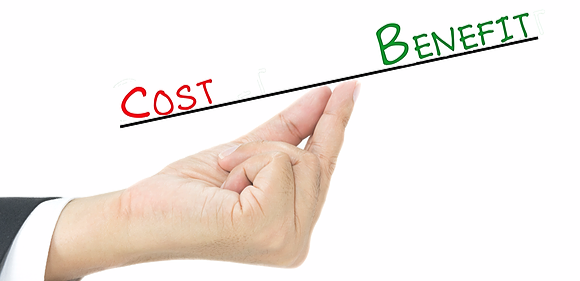As we rapidly move forward toward Christmas the holiday season is more and more on my mind. As I started contemplating what to write my mind wandered to a topic I have wanted to write about for a while, and which seems particularly appropriate at this time of year. Board games. I have so many good memories of receiving various board games as gifts over the years, particularly at Christmas. Santa Claus always knew that I enjoyed playing board games, so every year there was at least one under the tree.
It might come as a surprise to some that board games are patentable, but they are indeed. Processes have always been patentable and at its core a board game is just a method of playing by a predetermined set of rules. The goal is to crown a winner and sequential and repeatable steps are engaged by two or more players. Board games are definitely patentable, provided of course they are unique. I won’t spend time discussing whether a board game is unique, but rather will assume that to be the case. It is, however, always wise to first do some kind of a patent search to verify that you are not wasting your time and money following a path that will not likely lead to a patent being granted. For more information on patent searches see Patent Search FAQs, Patent Searching 101 and Patent Searching 102.
Of course, no single article can teach you how to write a patent application, but if you understand some of the basics of what will need to go into the patent application you are ahead of the game, and I think you may wind up with a better, more complete game in the process.
It is simple enough I know, but I am a fan of starting with something easy. What is your invention in one sentence or less? Not surprisingly that will be the title. While coming up with a title seems like a trivial step frequently I find that the way you characterize the invention in that pithy first sentence can focus the direction of the entire patent application, setting the tone and theme for how you want to present your invention.
If you do a Google Patent search for “board game” you will find page after page after page of patents simply titled “Board game.” Not very creative to be sure.
The title should be a brief but technically accurate, descriptive and should contain fewer than 500 characters, although a 500 character title is rather rare and really unnecessary. Typically you want to come up with a short title and I typically suggest is that you consider a title that is descriptive and 8 words or less. Here are some examples of titles that convey at least a little more information that “board game.”
- Board game simulating horse racing and wagering – See US Patent No. 5,226,655
- Construction board game with chance device – See US Patent No. 5,301,953
- Board game relating to stress – See US Patent No. 5,435,565
Alternatives
In my experience one of the things that inventors of board games frequently forget is the inclusion of alternative methods of play. Don’t just focus on the preferred method of play and preferred rules, but think about ways that the game can be modified and changed. Let me use an example from the extremely popular game Monopoly.
One of the things that keep many people from playing Monopoly is the length of the game. That has lead to any number of various “house rules” to be implemented by those who love the game but want it to be played faster so the game can be completed in a reasonable time frame, or at least before everyone loses interest. So if you invented Monopoly in addition to the traditional rules you should give some thought to rules associated with accelerated play. For example consider text like this:
Alternatively, in order speed up play one or more of the following rules can be agreed upon by a majority vote (or unanimous vote) of all players prior to the commencement of the game: (1) the title cards to each of the properties can be divided amongst the players at the beginning of the game; (2) only need 3 houses are required to be on a property in order to purchase a hotel rather than the 4 described in the regular game rules; (3) a predetermined time limit can be placed on the game (i.e., such as 90 minutes) with the winner being declared at the end of the given time period based on the player with the most cash.
Obviously, there is no particular magic to the above paragraph, and if you you wanted to write down all the various methods to accelerate play you would need multiple pages of text. But that is exactly what you want in your patent application. You want to cover whatever you can no matter how imperfect. If it works on any level it should be included because if it is not then you don’t own those rights, it is that simple.
If want your patent to be as broad as possible you will want to include any number of alternatives. That is true for any invention, but no where is it more true than with respect to board games.
What kind of rules do you use when you play at home? Give it some thought. In the meantime check out The Key to Drafting an Excellent Patent – Alternatives.
[Enhance]
Prior Art
While you probably do not want to talk very much about “prior art” in your patent application it is always helpful to appreciate what is in the prior art. If you do not know what is in the prior art how can you ever hope to describe your invention in a way that accentuates what is most likely unique? Without knowing what is in the prior art for all you know you might just be describing exactly what is in the prior art without anything unique being added. You just don’t know.
What kind of understanding of the prior art do you need? Obviously, you need an honest view of the prior art, but beyond that you need to be able to tell the story of the prior art in writing so that you can set up the uniqueness of your invention. For example:
In a conventional trivia game, an objective question is posed to a player, and if the player answers the question correctly, he or she is entitled to advance toward a winning position. If the player cannot answer the question correctly, no advancement occurs. Typically, such games are won by the player whose movement piece has traversed a predefined movement track. The questions of such games usually have specific answers, and generally comprise subject matter—often obscure—that can be divided into categories such as sports, arts, geography, politics, history, science and so forth. Such games generally require players to recall specific pieces of information for strategic advantage, and thus do not require players to think critically, answer subjective questions, collaborate, or make strategic decisions.
Now you may NEVER write something like that in a patent application, or if you do you might have it be extremely abbreviated. Why goes beyond the scope of this article, just trust me for now. Nevertheless, you absolutely need to be able to explain what is out there in this type of fashion. By describing the prior art for yourself you start your creative wheels in motion. If this is how someone would fairly characterize the prior art how do I convince them that my invention is unique?
Truthfully, if you cannot fairly describe the prior art and then articulate distinguishing features you really don’t have an invention. However, if you do fairly describe the prior art and then critically look at your invention you may well be able to identify things that are lacking in the prior art and then modify your invention to exploit those missing pieces.
Uniqueness
Now you understand what is in the prior art and have started to figure out how to explain the differences between your invention and the prior art. The next step is to put this into some kind of workable framework that is likely to lead you to an articulation of the invention that has a chance to be deemed unique enough to obtain a patent.
If you are going to obtain a patent you are going to have to describe an invention, in this case a game, that is unique. It cannot be identical to anything in the prior art (a novelty consideration under §102) and it cannot be obvious in light of a combination of prior art games (a consideration under §103). You absolutely need to be able to articulate how and why your game is unique. If you cannot do that then you really don’t have an invention, although the game might be quite entertaining.
At the risk of oversimplifying this very important step allow me to encourage you to work on something of an “elevator speech” that will explain WHY your game is unique. An elevator speech needs to be able to be delivered in about 15 to 20 seconds. Imagine you were in the elevator with the CEO of Toys R Us. You have from the 1st floor until whatever floor they are going to get off to pitch your board game and generate enough interest to get to the next phase. This needs to be rehearsed, delivered precisely and leave the CEO wanting more. For example:
My board game is unique when compared with other known educational games because it requires players to go beyond mere recollection of specific, and often obscure, facts, and requires the participants to think critically, answer subjective questions, collaborate and make strategic decisions. By playing the game children develop skills that help them bridge the gap between regurgitation of facts to synthesis and presentation of information.
If this were really an elevator speech you would want to weave in a bit more, but for our purposes it is sufficient for now. What you have here is an articulation of WHY the game is unique, not HOW the game is unique. In my experience inventors are good at either explaining why their invention is unique or explaining how their invention is unique, but rarely both. My theory is that is because most people don’t distinguish between why and how, but in the inventing world this is crucial.
You can point to steps of play that make your invention different from a HOW perspective, but why is that difference really unique? What underlies the difference, if anything? Similarly, the game may be educational in nature and work toward building a skill set for players, whether children or adults. The fact that there isn’t anything known that delivers the same WHY factor is helpful, but not enough to get a patent. Patents need to focus on mechanics and process.
Before progressing let me give you an example of a HOW statement:
The game is unique because the playing surface is made up of three similar boards or grids lying in three vertically spaced planes. Each of the three boards is divided into thirteen similar spaces or squares. Nine of the spaces form a square, three spaces on each side of the square surrounding a central space. The remaining four spaces lie outside the square with one space lying next to the center space of each of the four sides of the square.
Did you follow along? Probably not, but hopefully get the idea. Here the HOW is associated with the game board and if you were describing this you should have an illustration and refer to that illustration to assist the reader in following along. Pictures are worth 1000 words — if not more — so for goodness sakes never skimp on professional drawings. In any event, the unique playing surface almost certainly influences the objectives of the game and the playing steps, so you can use a structural uniqueness to build upon to further explain process step uniqueness.
[Inventors-Google]
In my opinion the several paragraphs you will write that address the why and how are critical. They set the theme for the invention and can help provide that critical “A Ha” moment. In my experience if there is really an invention there is it usually clear, but along the journey to describe the invention so that others will appreciate the magnitude of the uniqueness you need to capture them and give them a reason to understand that same “A Ha” that you have. Thus, spending time figuring out the how from a process level and the why that underlines the process level will be very beneficial.
Before leaving this topic let me return to the WHY statement about the education board game above. Here is one way that you might be able to envision the WHY and the HOW coming together:
The present invention is an educational board game. The invention goes beyond mere recollection of specific, and often obscure, facts, and that requires the participants to think critically, answer subjective questions, collaborate and make strategic decisions. In particular, the game challenges players’ knowledge and understanding of important information about United States government, history and culture. The game comes with instructions, a game board, and multiple player pieces, question cards containing easy, intermediate and difficult questions, and an answer key. Each question card will have both an objective question with point total and a subjective question. Players advance their player movement pieces along the player movement track the number of spaces corresponding the number of points achieved, with the subjective questions being evaluated and scored by other players. The object of such a game is to be the first player to traverse the player movement track.
As you can imagine, there is so much more that can be told about inventing and then patenting a board game. This only scratches the surface, but hopefully it will give you some actionable ideas about how to move forward.
Today, many board game players design games and look to crowdfunding to create marketable game sets. If a game is unique and original, they can patent their work. Main reasons why game inventors apply for patents include opportunities to earn revenue from sales or licensing, credibility in the marketplace, and sole rights to the concept.

How to File
To receive a patent on your board game invention, you'll need to file a patent application with the United States Patent and Trademark Office (USPTO). First, to avoid rejection due to similar, existing works, search the USPTO database.
An inventor who applies for a utility patent files a written description and drawings with the USPTO. Today's preferred method is online filing, using forms supplied on the USPTO website. Utility patents last for 20 years and must meet three basic criteria to qualify.
1. Originality
Your game must be novel, meaning it cannot replicate prior work. Study available games and explain the prior state of the art in writing, as a backdrop for the uniqueness of your own invention. If you created a flying game, are other flying games already available? Explain clearly, step by step, what distinguishes yours from the pack. When you describe the existing works, you become likely to refine your own, making it distinct. What do your players do that they won't do in any other game? Why does the difference matter? Does it help teach or reinforce a skill, for example? Explain how the game keeps track of players' progress and success. In your explanation, link the mechanics and the graphics of your game to its novelty and originality.
2. Nonobviousness
File for a patent only if other game makers couldn't think up the idea through experience with other games. Simply put, your game may not be an obvious take on an existing game or a blend of existing games.
3. Utility
An innovation must have value. New games, as long as they work, have value. Education and even entertainment value meet this standard.
Elements of an Application
An application for a game patent has several key elements, including:
- The name of the game: Title your work within a few descriptive words. "Ailerons: A Game About Learning to Fly" is a straightforward, succinct title for a patent.
- A detailed description: Explain and describe your board game with care and in detail.
- Drawings, with a brief description of the drawings: Prepare detailed, understandable illustrations of the game. Have a designer work with you to supply professional illustrations of the moves (Fig. 1, 2, etc.), with key features enlarged as necessary to make them clear. Explain the uniqueness of your game through every aspect with a brief description of the drawings.
- Alternative game modes: Devise variations on the rules so that players can accelerate or vary the game. This can prevent another gamer from thinking up an alternative version of your game and applying for rights to it.
- Application fees: The current fee schedule appears at the USPTO website. Be aware that the maintenance fees for successful patent applications raise the overall costs.
Option to File a Provisional Application First
A provisional patent application is a simpler way to start marketing an invention. The application comprises a cover sheet, a description, and detailed illustrations. Once submitted, it allows its author to call the concept "patent pending."
The provisional patent application represents a cost-efficient, confidential, legally protected chance to take time exploring your game's market potential. You must proceed to patent the game when it is new—within a year of introducing it commercially. A provisional patent does not transform into a patent on its own.
Descriptions in a provisional patent application must be precise. Yet, if they are broad enough to allow you to adjust the game and still match the application, they allow you to tweak your game based on other players' reviews.
A great game is not only a contribution to people's social lives. It is also the inventor's intellectual property. Securing a patent allows you to protect your original work. If you need help in protecting your work, you could always speak to a qualified attorney specializing in the patent industry.
This portion of the site is for informational purposes only. The content is not legal advice. The statements and opinions are the expression of author, not LegalZoom, and have not been evaluated by LegalZoom for accuracy, completeness, or changes in the law.
People have been playing board games for thousands of years. The Royal Game of Ur, which originated in Mesopotamia more than 4,500 years ago, is reportedly still played in Iraq.1 (Game equipment has been found that predates the Royal Game of Ur by as much as 900 years, but the rules to those games have been lost to history.2)
In the modern era, though venerable games like chess and backgammon remain popular, many people associate the phrase “board games” with established staples such as Monopoly, Scrabble, Chutes and Ladders, and Candyland. More complex strategic games have been generally relegated to hobbyists and niche gamers, such as war gamers, who enact historical or fictional battles using cardboard chits or miniature figures on map boards. However, in recent years, there has been a rising tide of new board games being developed, marketed, sold, and played around the world. In 2013, board games accounted for more than $1.8 billion in sales in the United States, out of a $22 billion domestic toy market.3 These sales figures, while dwarfed by the size of the video game industry, are quite respectable and suggest that board games have become a mainstream source of entertainment. Digital and mobile versions of board games are also becoming quite common.
As a result of this transition from “kid stuff” and fringe hobby to mainstream entertainment, board game developers and publishers have found themselves facing intellectual property (IP) issues with increasing frequency. Lawsuits or threats of legal action—especially at the interface between offline and digital board gaming—are not uncommon. Message boards frequented by gamers and game makers contain questions such as “I am making a game; how can I prevent someone else from copying it?” and “I am making a game that is similar to Game X; how can I avoid getting in trouble for copying?” Board games occupy a nexus of the three primary forms of intellectual property protection—copyright, trademark, and patent—so these questions are not always easily answered.
Copyright
To discuss copyright in board games, we must look back to an 1879 Supreme Court case ironically having nothing at all to do with games. In Baker v. Selden,4 the plaintiff had developed a new method of bookkeeping and published a book containing an introduction, an explanation of the method, and some examples that consisted mostly of blank bookkeeping forms. His book met with little success, but when another publisher began successfully selling a book containing very similar forms, his widow filed a copyright infringement suit. The Supreme Court held that although the book was subject to copyright, the bookkeeping method itself was not a suitable subject of copyright, and because the forms were merely implements for performing the method, they were not copyrightable subject matter. Justice Joseph Bradley wrote, “[W]hilst no one has a right to print or publish his book, or any material part thereof, as a book intended to convey instruction in the art, any person may practice and use the art itself which he has described and illustrated therein. . . . The copyright of a book on book-keeping cannot secure the exclusive right to make, sell, and use account-books prepared upon the plan set forth in such book.”5
The principle laid down in Baker v. Selden was later codified in the Copyright Act of 1976, which says clearly: “In no case does copyright protection for an original work of authorship extend to any idea, procedure, process, system, method of operation, concept, principle, or discovery, regardless of the form in which it is described, explained, illustrated, or embodied in such work.”6 Thus, the idea-expression dichotomy that is fundamental to copyright law can be traced back to Baker v. Selden.
Therefore, the systems or processes that make up the core of a game—generally referred to as the “game mechanics”—are not subject to copyright, even though the written rules, game board, card artwork, and other elements—often referred to as the “theme” of the game—may be. Game mechanics can be as simple as “roll dice and move a token along a track,” or far more complex. Regardless of the complexity or originality of a given game’s systems and processes, its game mechanics will likely not be protected by copyright.
Trademark
A trademark can protect the name and other aspects of a board game. Trademarks serve to identify the source of a particular product or service and to distinguish the products of one seller from those of others in the marketplace. If a game’s name is not generic or merely descriptive of the game, it may warrant trademark protection. Similarly, other aspects of a game—character names, logos, graphic designs, and so on—may qualify as trademarks. As with any other trademark in the United States, registration is not required, as trademark rights begin to accrue as soon as the mark is used in commerce, and thus the game’s developer may prevent others who come later from using marks if there is a likelihood of confusion among the consuming public.
A battle over one of the best-known board games in history led to a change in trademark law. Parker Brothers, publisher of Monopoly, was embroiled in a decades-long series of legal battles with an economist named Ralph Anspach, who had designed and begun selling a game he called Anti-Monopoly. The dispute addressed a variety of claims, but the trademark infringement claim predominated. Finally, in 1983, the Supreme Court let stand an appeals court ruling that the word “Monopoly” had become generic, because purchasers associated the name with the product rather than with the source.7 Specifically, evidence showed that purchasers of Monopoly were motivated by their knowledge of the game, and not by its association with Parker Brothers. Directly as a result of this case, Congress amended § 14(c) of the Lanham Act, which addresses cancellation of a registered mark, later that year. Congress added language clarifying that a mark becomes generic only if its “primary significance . . . to the relevant public” is as the generic description of the particular goods or services, and that purchaser motivation is not used as the test.8
Since the 1983 decision, and notwithstanding the legislative “fix” to the issue, the status of the MONOPOLY trademark is somewhat muddy. Hasbro (the current owner of the game via a series of mergers and acquisitions) is listed as the owner of the original 1935 MONOPOLY trademark registration, which was theoretically canceled in 1983. Notwithstanding the registration, Hasbro contends with a relatively steady stream of “-opoly” games. The U.S. Patent and Trademark Office has more than 400 records of applications to register game names ending in “-opoly.” Most of them have been abandoned or canceled, but there are several “-opoly” trademarks registered to other owners. (Interestingly, Hasbro also owns the trademark registration for ANTI-MONOPOLY, though the game itself is sold by the apparently unaffiliated University Games.)
As noted above, game names are an obvious option for trademark protection, but game designers and publishers have also sought to register and protect trade dress in game board designs, distinctive card layouts, and even game tokens. Hasbro, for example, owns registrations for the design of the Monopoly game board, much of the artwork (e.g., the railroad icon; the images for the “Jail,” “Go to Jail,” and “Free Parking” spaces; and others), the Chance and Community Chest card designs, and the layout of the game’s money.
Patent
Although methods of play may not be suitable for copyright protection, patent protection may be available. A utility patent grants its owner the right to exclude any other person from practicing the patented invention. As applied to a board game, a patent would therefore allow the patent owner to prevent anyone from marketing a game that employed the game mechanics covered by the patent. In order to be patentable, the game mechanics must be unique and nonobvious, meaning that (1) the mechanics for which patent protection are sought are not already known or in use by others; and (2) differences between the game mechanics and prior games must not be obvious to someone with ordinary skill in the area of game design. If granted, a patent lasts for 20 years from the date of application. However, identifying the unique attributes of a game can be difficult, and the cost of obtaining patent protection and policing one’s patent can be prohibitive. As a result, individual and small game designers may not be in a position to pursue this avenue.
In 1935, Parker Brothers obtained a patent for the Monopoly board game, invented by Charles Darrow.9 The patent described the rules of the game and claimed the apparatus of a board game consisting of a continuous path around the board, and groups of spaces, each indicating the required rental for an opponent’s piece, with such rentals increasing as the owners acquired more spaces in the same group. Eight additional claims added or modified aspects of the game: for instance, Claim 2 added Chance cards; Claim 3 added title cards corresponding to the spaces, buildings, and player tokens; and so on. Claims 4 through 9 all specified that the spaces around the board represented “real estate locations, railroads, utilities, chance, community chest and penalties,” which narrows the scope of those claims and represents the theme of the game more than the mechanics. Nowadays, a company seeking to patent a game might be less likely to be so theme-specific in its claims to avoid limiting the protective value of the patent.
For example, in 1993, Wizards of the Coast (WotC, now a division of Hasbro Inc.) released a game based on collectible trading cards entitled Magic: The Gathering (M:tG), which became an instant success. In 1995, WotC was granted a patent for a “Trading Card Game Method of Play” that claimed a method of playing games in accordance with the rules of M:tG (an extended version of which made up the description of the preferred embodiment of the claimed invention).10 The claims of this patent detail various elements of game play, but are devoid of any reference to the fantasy and magic theme represented by the artwork of the game.
Patent law provides some traps for the unwary that may impede a hopeful game designer’s plans. Frequently, a game developer will ask gamers to play the game in a prototype form and provide feedback, which can be used to refine the design. Although playtesting can identify design problems that may make the game less enjoyable—or even impossible—to play, in the United States, public disclosure may invoke the on-sale bar, which prevents a patent from issuing if the invention was “in public use, on sale, or otherwise available to the public” more than a year prior to the application date.11 (In some foreign countries, there is no one-year grace period; any public disclosure prior to the application precludes the patent.) Thus, playtesting—particularly in a public setting, such as at a game convention or trade show—could be considered a public disclosure that will bar patentability. Also, some designers offer “print-and-play” versions of their games, which allow players to download and print out simple versions of the components and rules of a game and play it before the game is published. This too may be public disclosure sufficient to defeat a patent application.
Patent law also contemplates design patents, which may be awarded to new and original ornamental objects. While a utility patent applies to how an article works, a design patent addresses how the article looks. As such, a design patent may be an avenue for protecting novel game components, allowing the owner to prevent others from using similar-looking components. The design patent protects only the ornamental features of the article in question; any aspect of the article that performs a function will not be suitable for a design patent.
IP Complications in Board Gaming
Expansions/Fan Modifications
The stereotype of the lone inventor puttering around in his or her garage or workshop can actually be a reasonably accurate depiction of the independent game designer. Game design is often an iterative process over months or years, during which the designer adds, subtracts, modifies, and otherwise tinkers with an initial concept. A brief perusal of the “Board Game Design” forum at BoardGameGeek.com,12 a community website dedicated to board game news, reviews, and forums, shows a multitude of posts from designers explaining their works in progress and asking for advice from other game designers and gamers in general, about rules, mechanics, and how to publish a game (or get a game published).
Once a game is published, it may be the subject of one or more expansions—additional components or rules that change or enhance the initial game. Often such expansions are made by the original designer or a publisher that acquired the right to publish the game from the designer; in such cases, the allocation of IP rights—copyright, trademark, and/or patent—will remain the same as for the underlying game. However, some games are published in one country and licensed to a different company for publication and distribution in another country. Depending on the terms of the license, the foreign company may have the right to develop an expansion.
This situation may complicate the question of ownership. An expansion may include, for example, an additional game board, or new components designed to integrate with the original components, or revised or expanded rules. The expanded version of the game would then be considered a derivative work of the original game. If the license or distribution agreement does not clearly define the parties’ respective rights, the individual or company that creates the expansion will own the copyright in those items. Many distribution agreements in the strategy board game arena are one – or two-page contracts setting forth little more than revenue sharing terms, meaning such rights are often not clearly delineated. The owner of the underlying game may not have the right to distribute the expansion, which can threaten sales if the consuming public is more interested in the expanded game than the original.
Going Online
It can sometimes be difficult to get enough players together in one room at one time to play games. Computer program versions of board games—loaded onto a computer and played by one player against the computer—have been around for some time. The transition to an online format playable by multiple players in real time or asynchronously makes perfect sense for a board game developer. However, gamers can be impatient, and if a game publisher is not quick enough in creating and publishing an online version of a popular game, those among the community who are enterprising programmers may take matters into their own hands and come up with a homegrown, “unofficial” version of the game. Of course, such vigilante game development has IP implications that can lead to trouble.
In 2005, an Indian company released a game patterned on the popular word game Scrabble, which it called Scrabulous. The game was originally available on the company’s website, and in 2007, they released the game on Facebook, where it quickly became very popular. Shortly thereafter, in 2008, Hasbro, the owner of the original Scrabble game, filed a lawsuit against the company,13 and sent a notice to Facebook requesting that Scrabulous be removed from the service under the Digital Millennium Copyright Act (DMCA). Facebook complied for U.S. and Canadian subscribers. Mattel Inc., which owns the international rights to Scrabble, filed suit in India and initiated a DMCA action to have Scrabulous removed from Facebook for the rest of the world. The Delhi High Court ruled that the game of Scrabble itself was not copyrightable, but that the name “Scrabulous” infringed the SCRABBLE trademark.14 In the end, the Indian company re-released the game as “Lexulous” and made changes to the board layout and the point values of the letter tiles, hoping to distinguish the game from Scrabble sufficiently to avoid infringement. Ultimately, Lexulous returned to Facebook, after reaching agreements with Mattel and Hasbro; but it has never regained the same level of popularity.
In part, the failure of Lexulous to regain its former standing is due to a different Scrabble-like word game that popped up on Facebook in 2009 called Words With Friends. The creators of Words With Friends designed their game from the beginning to be different from Scrabble, using a different board layout, different point values for letters, and a different tile distribution. The creators also focused on the social aspects of the game, resulting in one of the most popular games on Facebook. Words With Friends now coexists on Facebook with an official Scrabble Facebook game developed by Hasbro. In an illustration of some of the oddities of IP issues in the game industry, Hasbro and Zynga (which acquired Words With Friends and added it to a stable of online games) entered into a relationship in 2012, under which Hasbro released a Words With Friends board game—effectively making a board game based on a Facebook game that was in turn based on its own board game.
Conclusion
Board games occupy a somewhat eccentric niche in intellectual property law, often not fully protectable by copyright, trademark, or patent, and thus susceptible to knock-offs and alternate themes. A would-be board game designer should understand which kinds of IP protection apply to which aspects or components of the game, and take appropriate steps to protect them accordingly: registering the copyright in the rules and other copyrightable components; ensuring that all agreements with contributors (such as artists) assign all rights to the game developer; exploring the possibility of patent protection for truly novel game mechanics; and making sure that any license or distribution agreements clearly delineate the IP rights of each party.

_2bd62819-db32-46fe-8fe6-bac362eca9b4.png)
























































